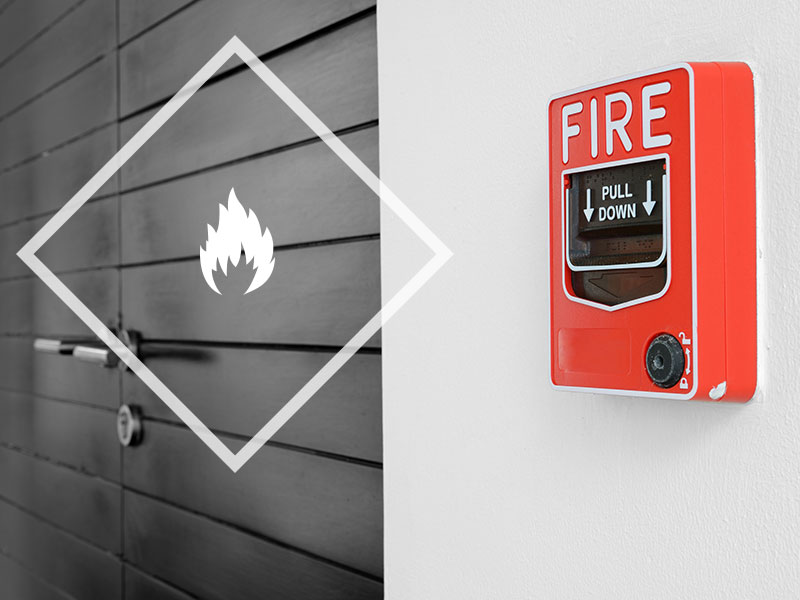Understanding Crucial Terms and Technologies in Fire Alarm Systems

In today’s fast-paced world, the importance of safety cannot be overstated, especially in commercial buildings, schools, hospitals, and industrial complexes. Fire alarm systems are a cornerstone of this safety infrastructure, providing early detection and alerting building occupants to potential fire threats. At WSS Integrated Technologies, we believe that understanding the key terms and technologies in fire alarm systems is essential for making informed decisions about fire safety in your premises.
In this blog post, we will explore some of the crucial concepts, terms, and technologies that form the backbone of modern fire alarm systems. This information will not only give you a clearer understanding of how these systems work but also help you recognize the vital components required for an effective fire safety strategy.
1. Fire Alarm Control Panel (FACP)
The Fire Alarm Control Panel (FACP), also known as the fire alarm control unit (FACU), is the heart of any fire alarm system. It monitors various fire detection devices, such as smoke detectors, heat detectors, and manual pull stations, and coordinates the responses based on the signals it receives.
- Functions of the FACP:
- Activates alarms and notification devices (sirens, strobes).
- Sends alerts to fire departments or monitoring stations.
- Provides a centralized interface for system status, enabling facility managers or fire responders to determine the source of the alarm.
Modern FACPs come with advanced features such as touch-screen interfaces, networking capabilities, and integration with building management systems, making them a sophisticated hub for managing fire safety.
2. Addressable vs. Conventional Fire Alarm Systems
When choosing a fire alarm system, one critical decision is whether to opt for an addressable or conventional system. Understanding the difference between these two types is essential.
- Conventional Fire Alarm Systems: These systems divide a building into zones. If a detector or call point in a specific zone is activated, the control panel can only indicate which zone the alarm originated from, not the exact device.
- Addressable Fire Alarm Systems: Addressable systems provide more detailed information. Each device connected to the system has a unique address. When a device triggers an alarm, the control panel pinpoints the exact location of the activated detector or manual call point, which significantly reduces the time it takes to identify and address the problem.
- Why Addressable Systems are Preferred:
- Faster and more precise fire detection.
- Easier to maintain due to individual device monitoring.
- Reduced risk of false alarms.
- Scalability in larger or more complex buildings.
3. Smoke Detectors: Photoelectric and Ionization
Smoke detectors are the most common devices used in fire alarm systems. However, not all smoke detectors are the same, and understanding the difference between photoelectric and ionization detectors can help in choosing the right equipment.
- Photoelectric Smoke Detectors: These detect smoke using a light source and sensor. When smoke enters the chamber, it scatters the light, which triggers the alarm. Photoelectric detectors are particularly effective at detecting smoldering fires, which generate large amounts of smoke but little flame.
- Ionization Smoke Detectors: Ionization detectors work by using a small amount of radioactive material that ionizes the air. When smoke enters the chamber, it disrupts the flow of ions, triggering the alarm. Ionization detectors are better at detecting flaming fires with minimal smoke.
Choosing the right type depends on the specific environment, but many modern systems include both types for comprehensive fire detection.
4. Heat Detectors
Heat detectors offer an alternative to smoke detectors in environments where smoke detection might lead to false alarms, such as in kitchens or mechanical rooms.
- Fixed Temperature Heat Detectors: These activate when the surrounding temperature exceeds a predetermined threshold.
- Rate-of-Rise Heat Detectors: These trigger an alarm when the temperature increases rapidly within a short period, regardless of the actual temperature.
Heat detectors are ideal for environments prone to smoke, steam, or dust, which could otherwise cause false alarms in traditional smoke detection systems.
5. Manual Pull Stations
In the event of a fire, manual pull stations allow building occupants to manually trigger the fire alarm system. Located at key points throughout the building, these devices are crucial for ensuring that fire alarms can be activated even if automatic detection systems fail.
- Single-Action: A single-action pull station requires a simple pull of the handle to activate.
- Double-Action: A double-action station requires two steps to activate, such as lifting a cover and then pulling the handle, which helps prevent accidental activations.
Manual pull stations are essential for enhancing the safety and responsiveness of any fire alarm system.
6. Notification Appliances
Once a fire alarm is triggered, notification appliances alert building occupants. These devices include:
- Audible Alarms: Such as sirens or horns, designed to ensure everyone in the building hears the alarm.
- Visual Signals: Strobe lights or flashing indicators are crucial in areas where noise levels are high or for people with hearing impairments.
- Voice Evacuation Systems: In larger or more complex buildings, pre-recorded or live voice announcements provide specific instructions on evacuation procedures, improving safety during emergencies.
7. Mass Notification Systems (MNS)
Mass notification systems are used to communicate emergency messages beyond the fire alarm signal. These systems broadcast messages through various channels, including speakers, digital signage, and even mobile devices. Mass notification systems can be integrated with fire alarm systems to deliver critical information, such as evacuation routes or safety instructions.
These systems are particularly beneficial in larger complexes, universities, or hospitals where multiple buildings may be affected by an emergency.
8. Fire Alarm Monitoring
For added safety, fire alarm systems can be connected to central monitoring stations, where professional operators are alerted to any alarms 24/7.
- Benefits of Fire Alarm Monitoring:
- Immediate notification to emergency services.
- Reduces response times in the event of a fire.
- Provides peace of mind, knowing the system is always monitored.
Fire alarm monitoring ensures a faster and more coordinated response, even if no one is in the building when an alarm is triggered.
9. NFPA Compliance and Standards
The National Fire Protection Association (NFPA) provides the standards and guidelines that dictate the installation, maintenance, and operation of fire alarm systems. NFPA 72, also known as the National Fire Alarm and Signaling Code, is the primary standard governing fire alarm systems in the U.S.
- NFPA 72 covers:
- System design and installation requirements.
- Testing and maintenance procedures.
- Notification appliance requirements.
- Integration with other safety systems like sprinklers and emergency lighting.
Ensuring compliance with NFPA standards is not only critical for safety but is often legally required.
Conclusion
Fire alarm systems are complex networks of devices and technologies designed to protect lives and property. Understanding key components like the Fire Alarm Control Panel (FACP), the differences between addressable and conventional systems, and the roles of smoke detectors, heat detectors, and manual pull stations can help ensure that your fire safety strategy is robust and effective.
At WSS Integrated Technologies, we are committed to providing cutting-edge fire alarm systems and expert advice tailored to your specific needs. By staying informed about the latest terms and technologies, you can make better decisions that contribute to the overall safety and security of your building. Contact us today for your complimentary consultation.
- The Role of Continuous Monitoring and Analysis in Intrusion Detection - September 6, 2024
- Understanding Crucial Terms and Technologies in Fire Alarm Systems - August 30, 2024
- The Anatomy of a Fire Alarm System: Essential Components for Complete Protection - August 23, 2024
